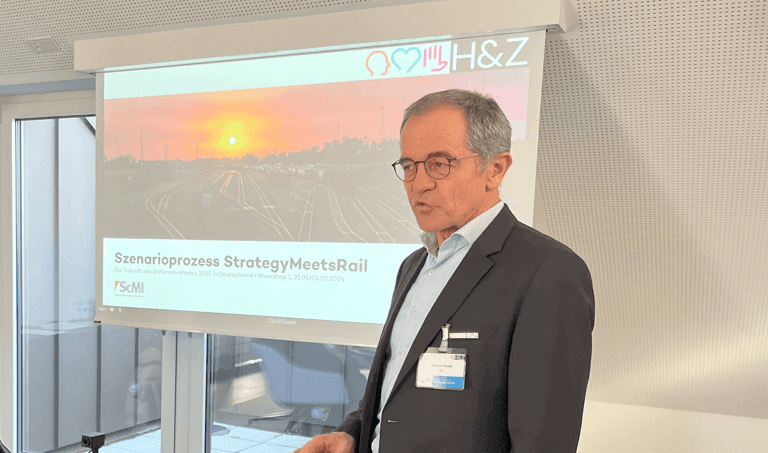The future of rail transport in 2035
Rail transport in Germany is at a turning point: it is supposed to play a key role in sustainable mobility, but infrastructure challenges, digitalisation and political conditions are influencing its development. In our study, we outline five scenarios for the year 2035 and show which strategic measures are necessary to make rail transport fit for the future.
- Home /
- Insights /
- Publications /
- The future of rail transport in 2035
Five scenarios that will shape the future of the railways
The rail transport sector in Germany is on the verge of groundbreaking developments. Our study presents five realistic future scenarios – from the challenges posed by outdated structures to the complete integration of the railways into a sustainable mobility system.
Five alternative future scenarios form the range of possibilities: from an outdated, stagnating rail network to railways as the core of an intelligent mobility system.
Competitiveness and infrastructure as key issues: Without targeted investment and modernisation, railways will remain at a disadvantage in competition with alternative modes of transport.
Digitalisation as an enabler of efficiency: automation, AI and data-driven mobility solutions are crucial for higher capacities and better passenger services.
Political decisions determine success: subsidies, regulations and strategic investments have a significant influence on which scenario becomes reality.
Customer focus: There needs to be a stronger focus on passengers' needs – from improved services to seamless booking systems.
- Cooperation instead of competition: Greater cooperation between transport providers will promote interoperability and make multimodal services more attractive.
The railway as a central component of mobility in 2035
H&Z sees rail transport as an essential component of a sustainable and efficient mobility strategy.
But that requires courageous decisions:
- Investment in infrastructure and digitalisation must be accelerated to avoid bottlenecks.
- Strengthen innovation: New business models and digital solutions are needed to make rail transport more attractive and efficient.
- Cooperation instead of isolation: Only through close cooperation between industry, operators, politics and technology providers can rail transport be established as the backbone of a sustainable mobility system.
The future is ours to shape – it is up to us to set the right course now.
Download the full study now!
Please note that this study is currently only available in German.

